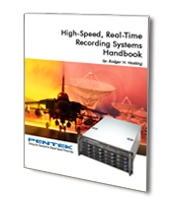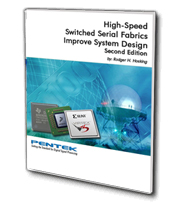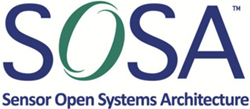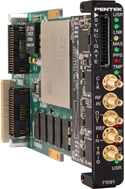
Sign-Up for SOSA (Sensor Open Systems Architecture) Updates!


Sign-Up for Quartz Zynq UltraScale+ RFSoC Updates!


Sign-Up for Jade Kintex UltraScale Updates!


Sign-Up for Cobalt Virtex-6 Updates!


Sign-Up for Onyx Virtex-7 Updates!


Sign-Up for Talon System Updates!


Sign-Up for Flexor FMC Updates!


Sign-Up for the Pipeline Newsletter!

Free Technical Resources:

Putting VPX and OpenVPX
to Work Handbook


High-Speed, Real-Time
Recording Systems Handbook


High-Speed Switched Serial
Fabrics Improve System Design


Software Defined Radio
Handbook


Putting FPGAs to Work for
Software Radio Handbook


Critical Techniques for High
Speed A/D Converters in
Real-Time Systems Handbook

Pentek Literature:


| |

| |
Our feature article provides an overview of SOSA™ (Sensor Open Systems Architecture), describing its history, objectives, participants, and status.
Answers to pertinent questions relating to SOSA will be answered. Here are a few:
- What Are the Objectives of SOSA?
- Who Participates in SOSA?
- Is SOSA here to stay?
|

Photo credit: U.S. Air Force photo/Airman 1st Class Mya M. Crosby
| |
Military aircraft avionics are traditionally a collection of subsystems, each dedicated to a particular fixed function. Each of them occupies an enclosure with well-defined dimensions, mounting points, and electrical interfaces for sensors, antennas, power supplies and control ports.
Changing the function within any subsystem is often quite limited, so that an upgrade to improve performance or capabilities usually means replacing the entire subsystem with a new one.
|
This article explains that upgrading to a SOSA aligned system can mean huge cost and production savings as you can keep existing subsystems in place instead of replacing them completely when an upgrade is needed. You can replace one SOSA-compliant plug-in card with another, as an example, to add new device technology, higher performance levels, faster computing power, and higher signal and data bandwidths.
Model 8256 SOSA Aligned 3U VPX Development Platform

| |
"The efforts put into this platform demonstrate our commitment and the value of the alignment and interoperability goals driving the SOSA Consortium mission," said Bob Sgandurra, Pentek's director of product management.
"Pentek has worked tirelessly with key suppliers in the open architecture community to put this platform together. With the Model 8256, customers can now immediately start integrating and building their application."
|
Model 8256 SOSA Aligned Development Platform Video

| |
Focus on SOSA eBook
Learn more about SOSA™ by downloading this eBook today! This SOSA eBook holds a compilation of technical articles regarding the Sensor Open Standards Architecture (SOSA).
SOSA is chartered with creating a common framework for transitioning sensor systems to an open-systems architecture, based on key interfaces and best practices established by industry-government consensus. The benefits of this architecture include improved interoperability, as well as reduced development time, deployment and costs.
|
Understanding Conformance to the SOSA Technical Standard Webinar
|
The SOSA Technical Standard, applies a modular open systems approach (MOSA) to high-performance defense sensor systems such as radar, electronic warfare, and SIGINT platforms.
During this webinar, experts involved in the SOSA Consortium and the standard's development will discuss the elements of conformance to the Technical Standard, how the upcoming 1.0 release will address it, and considerations for the certification process.
| |

|
This webinar explores the software and IP environment for developing RFSoC (Radio Frequency System-on-Chip) applications. Learn effective strategies for leveraging existing IP and software to streamline development tasks.
Pipeline Product Focus
High-Speed Synchronizer and Distribution Board for Quartz RFSoC Products
|
Features
- Accepts RF signals from 925 MHz to 2175 MHz
- Programmable LNA handles L-Band input signal levels from -50 dBm to + 10 dBm
- Programmable analog downconverter provides IF or I+Q baseband signals at frequencies up to 123 MHz
- Two 400 MHz 12-bit A/Ds digitize IF or I+Q signals synchronously
- Two FPGA-based multiband DDCs (digital downconverters)
- Xilinx® Kintex® UltraScale™ FPGA
- Five GB of DDR4 SDRAM
- Sample clock synchronization to an external system reference
| |
Model 71891


|
|













